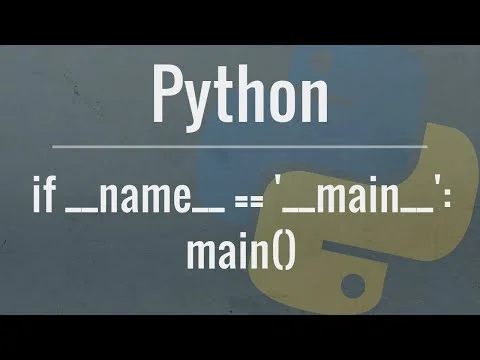6 Python Libraries For Parallel Processing
Content
Starting with introducing you to the world of parallel computing, it moves on to cover the fundamentals in Python. This is followed by exploring the thread-based parallelism model using the Python threading module by synchronizing threads and using locks, mutex, semaphores queues, GIL, and the thread pool. We now have a working knowledge of Python, and soon we will start to use it to analyze data and numerical analysis. Before we go deeper, we need to cover parallel computing in Python. The fundamental idea of parallel computing is rooted in doing multiple tasks at the same time to reduce the running time of your program. The following figure illustrates the simple idea of doing parallel computing versus serial computing that we used so far.
Keyword parameters on the @process decorator allow you to control some meta-behavior of the process. This represents the structured paradigm, based off a more strict type of lambda math notation where functions invoke functions until the top-most value is produced. In Entangle, there are two ways you can write your workflows, depending which is more convenient for you. In fact, entangle is designed to be a low level framework for implementing these kinds of things.
- Pythran – Pythran is an ahead of time compiler for a subset of the Python language, with a focus on scientific computing.
- Indeed, the fork system call permits efficient sharing of common read-only data structures on modern UNIX-like operating systems.
- Moving on, you will discover distributed computing with Python, and learn how to install a broker, use Celery Python Module, and create a worker.
- Pythonis long on convenience and programmer-friendliness, but it isn’t the fastest programming language around.
- Further on, you will learn GPU programming with Python using the PyCUDA module along with evaluating performance limitations.
This book will help you master the basics and the advanced of parallel computing. Another common error is to over-synchronize a program, so that non-conflicting operations cannot occur concurrently. As a trivial example, we can avoid all conflicting access to shared data by acquiring a master lock when a thread starts and only releasing it when a thread completes. This serializes our entire code, so that nothing runs in parallel. In some cases, this can even cause our program to hang indefinitely. For example, consider a consumer/producer program in which the consumer obtains the lock and never releases it.
How To Make Parallel Computing In Python
In this article you’ll learn how the GIL affects the performance of your Python programs. Now we need to check whether the amount was calculated correctly.

The “ideal” situation is when all processes can run completely in parallel by assigning exactly one to each processor. AnswerSince we are not changing the values of A but rather only summing over them, there is no need for A to be shared; it is sufficient for each process to receive its own copy of it. One would expect that we would first join() the processes and get the return values from the Queue later. However, the correct pattern is the reverse, which we use here.
It therefore does not provide its own redundant scheduler or task manager. Because of this, top-down visibility or control of workflow processes is not as easy as with centralized task managers. Entangle is a different kind of parallel compute framework for multi-CPU/GPU environments. It allows for simple workflow design using plain old python and special decorators that control the type of parallel compute and infrastructure needed. Both of these will lock the main program that is calling them until all processes in the pool are finished, use this if you want to obtain results in a particular order.
Numpy Reshape
We define a list of tasks, which in our case are arbitrarily selected integers. Each worker process waits for tasks, and picks the next available task from the list of tasks. Having done this setup we define a process pool with four worker processes . We make use of the class multiprocessing.Pool(), and create an instance of it. Both tasks and results are queues that are defined in the main program. Tasks.get() returns the current task from the task queue to be processed.
Since at least one worker will reside on a different process, this involves copying and sending the arguments to the other process. This could be very costly depending on the size of the objects. Instead, it makes sense to have workers store state and simply send the updated information. As a result, there is no guarantee that the result will be in the same order as the input. In Python, threads do not execute in parallel to one another, it only gives the illusion of such. Python handles the context switching between threads and is limited by the GIL. Processes on the other hand, are not controlled by a GIL and can thus truly run in parallel.
Therefore, learning the basics of parallel computing will help you design code that is more efficient. Next you will be taught about process-based parallelism where you will synchronize processes using message passing along with learning about the performance of MPI Python Modules.

A simple task, even for a single-processor system, but very visual. This task has no practical sense since parallel computing will be effective for a large data set. But in order to understand the concept of parallel computing, this example is great. Multiprocessing is the process of using two or more central processing units in one physical computer. There are many options for multiprocessing; for example, several cores on one chip, several crystals in one package, several packages in one system unit, etc. A multiprocessor system is a computer device that has two or more processor units , each of which shares the main memory and peripheral devices for simultaneous processing of programs.
In IPython.parallel, you have to start a set of workers called Engines which are managed by the Controller. A controller is an entity that helps in communication between the client and engine. In this approach, the worker processes are started separately, and they will wait for the commands from the client indefinitely. Pool class can be used for parallel execution of a function for different input data.
Shared Memory Programming
A fine-grained parallel program needs lots of communication/synchronisation between tasks, in contrast with a course-grained one that barely communicates at all. An embarrassingly/massively parallel problem is one where all tasks can be executed completely independent from each other .

For long computations, this may be undesirable and we can ask the engine to return immeidately by using a non-blocking operation. In this case, what is returned is an Async type object, which we can query for whether the computation is complete and if so, retrieve data from it. Since neither process has sent anything, both will wait indefinitely for the other to send it data, resulting in deadlock. In this example, we use a None message to signal the end of communication. We also passed in one end of the pipe as an argument to the target function when creating the consumer process. This is necessary, since state must be explicitly shared between processes. As with the simple example above, there is a read phase, in which all particles’ positions are read by all threads.
Multicore Data Science With R And Python
The goal is to desing parallel programs that are flexible, efficient and simple. It is easy to overload the CPU utilization and exceed 100% which will have a negative impact on performance of your code. If we were to change ncore parameter to say 6 and leave Pool as 6, we will end up overloading the 6 cores . Those 6 processes come from p.map() command where p is the Pool of processes created with 6 CPU’s. The environment variable set 1 core for each of the spawned processes so we end up with 6 CPU cores being efficiently utilized but not overloaded.

To use multiple cores in a Python program, there are three options. Multiple processes are a common way to split work across multiple CPU cores in Python. Each process runs independently of the others, but there is the challenge of coordination and communication between processes. The multiprocessing package in the standard library, and distributed computing tools like Dask and Spark, can help with this coordination. Every process needs a working copy of the relevant data, and communication is typically through network sockets. There are ways to mitigate both of these problems, but it is not a straightforward task that most programmers can solve easily. This book will teach you parallel programming techniques using examples in Python and will help you explore the many ways in which you can write code that allows more than one process to happen at once.
No process can continue because it is waiting for other processes that are waiting for it to complete. Operations that must be synchronized with each other must use the same lock. However, two disjoint sets of operations that must be synchronized only with operations in the same set should use two different lock objects to avoid over-synchronization. The end result is that the counter has a value of 1, even though it was incremented twice! Worse, the interpreter may only switch at the wrong time very rarely, making this difficult to debug. Even with the sleep call, this program sometimes produces a correct count of 2 and sometimes an incorrect count of 1.
By incorporating C/C++ and Fortran codes to the game for selected, performance-sensitive parts, we will show that Python codes can achieve high performance while retaining high-level and flexibility. These “low hanging fruits” are great because they offer a path to easy parallelism with minimal complexity. Other problems are serial at small scale, but can be parallelized at large scales. RCpedia is written and maintained by the Research Hub DARC group. In addition to supporting research computing, the DARC team engages directly with faculty members preparing large-scale datasets, assisting with data analysis, and consulting on research design.
The number of CPU cores available determines the maximum number of tasks that can be performed in parallel. The number of concurrent tasks that can be started at the same time, however, is unlimited. Hands-On Python 3 Concurrency With the asyncio ModuleLearn how to speed up your Python 3 programs using concurrency and the asyncio module in the standard library. See step-by-step how to leverage concurrency and parallelism in your own programs, all the way to building a complete HTTP downloader example app using asyncio and aiohttp.